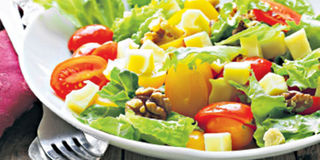Raw verses cooked: What are the advantages and disadvantages?

Cooking removes about two-thirds of the vitamin C in fresh spinach. And according to researchers at the University of California, loss of vitamin C during home cooking typically ranges from 15 to 55 per cent, depending on the method used.
What you need to know:
- Minerals and water-soluble vitamins are lost into the cooking water when food is boiled (nutrient losses tend to be around 20 to 50 per cent).
- Steam-frying simply means frying food with a little oil and either water or some other water-based sauce like stock. Once this has been added, put a lid on to essentially “steam” the food.
What do I gain from eating raw foods?
It appears that water-soluble nutrients like vitamin C, B-vitamins, and a group of nutrients called polyphenolics are fairly prone to degradation when cooked or processed.
To give you an example, canned peas and carrots lose 85 to 95 per cent of their natural vitamin C.
Another study showed that frozen cherries lost as much as 50 per cent of anthocyanins, the nutrients found in the dark pigments of fruits and vegetables, after six months.
Cooking removes about two-thirds of the vitamin C in fresh spinach. And according to researchers at the University of California, loss of vitamin C during home cooking typically ranges from 15 to 55 per cent, depending on the method used.
So, is it better to eat all vegetables raw?
While raw vegetables have a multitude of benefits (lots of fibre, more vitamin C), not all veggies should be eaten raw.
It depends on which nutrient you want to get out of the vegetable you are eating. As one German study showed, those who ate a raw food diet had higher levels of beta carotene, but their lycopene levels were well below average.
That is probably because fresh, uncooked tomatoes actually have lower lycopene content than cooked tomatoes. Cooking breaks down the thick cell walls of many plants, releasing the nutrients stored in them. My advice? Mix them up: Eat both raw and cooked vegetables.
Is boiling the best way to cook vegetables?
Minerals and water-soluble vitamins are lost into the cooking water when food is boiled (nutrient losses tend to be around 20 to 50 per cent).
The shorter the time, the less the water, and the lower the temperature, the more this leaching is reduced. Cut vegetables into large pieces, since it reduces the surface area through which water-soluble vitamins such as B and C can leach out.
Steaming is the best way to cook vegetables: You lose fewer nutrients and retain fibre, vital not only for keeping your bowel movements regular, but also for flashing out any nasty toxins and excess cholesterol out of the body.
And is all deep-frying bad?
I am afraid there is no goodness left in deep-fried food. Furthermore, the baddies that are created by this cooking method use up valuable antioxidant nutrients like vitamin A, C, and E.
So, how can I make healthy chips?
Baking is a good way to cook potatoes because you can eat the skin, which is fibre-rich and helps the cooked potatoes retain their vitamin C content. Avoid coating the potatoes (or indeed any other food) with oil.
What is steam-frying?
Steam-frying simply means frying food with a little oil and either water or some other water-based sauce like stock. Once this has been added, put a lid on to essentially “steam” the food.
Microwaving seems like a good fat-free cooking method. What do you think?
As I said last week, I think you should avoid using the microwave. While I will sometimes indulge in deep-fried food, I simply do not eat food if I know it’s been microwaved.
Of course, the convenience factor of microwaving means that it encourages people to eat vegetables that they otherwise would not eat, but if you can choose another method of cooking, go for that instead.
The writer is a clinical nutritionist and certified by the Nutritional Therapy Council in the UK. Please direct any questions about family nutrition to her on [email protected]



